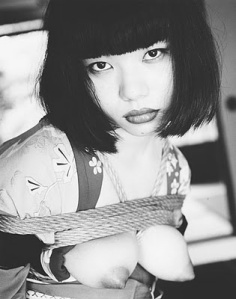Ike No Taiga: Japanese artist and a glimpse into the history of Japan
Lee Jay Walker
Modern Tokyo Times
Japanese art is very distinctive and contrasts greatly with classical European art and clearly religious differences, environmental factors, distance, limited social interaction between both poles and other important factors is behind this. Ike No Taiga exemplifies the vast difference in thinking and clearly China was the central of gravity for a major period in the history of Japan.
This article is merely highlighting Ike No Taiga and focusing on the underbelly of culture in Japan and how his life provides glimpses of the reality of Japan in the 18th century. After all, the land of the rising sun was clearly influenced by ideas emanating out of China. Therefore, while thinking was influenced before the Nara period in the 8th century it is clear that the Nara period highlights the interaction of both nations.
It is often claimed that the Edo period is based on isolation but the life of Ike No Taiga (1723-1776) challenges this oversimplification. The Edo period witnessed the Buddhist inquisition against Christianity whereby all Christians were killed in this period in Japan but outside cultural influence still entered this country.
Therefore, while religious edicts were a reality the isolation of Japan is a different matter because thought patterns emanating from China were still potent. Therefore, the life of Ike No Taiga is fascinating because of many factors.
Ike No Taiga was born into a relatively poor family and his father died when he was very young. However, despite this his mother somehow managed to get her son educated by some of the finest minds in Japan in this period.
This in itself shows you that the heavy handed stratification of society was not completely rigid and Ike No Taiga was accepted because he was a man of letters and an artist who provides glimpses of Japan in this period.
Ike No Taiga was taught classical Japanese and Chinese disciplines during his childhood and the Mampuku-ji Zen temple would remain embedded within his soul. Therefore, irrespective of Japan’s isolation or not; the classical world of China was still potent within the mindset of Japanese high culture and religious thinking from Mampuku-ji Zen temple shaped and influenced Ike No Taiga greatly.
At the tender age of 14 Ike No Taiga had become a professional artist and a calligrapher of high esteem. However, the encounter he had with Yanagisawa Kien would impact on him greatly.
Through Yanagisawa Kien the world of bunjin was introduced to him and this world would shape the life of Ike No Taiga. Yanagisawa Kien was a major artistic figure and social thinker and bunjin was potent within high circles in this period of Japanese history.
Anna Beerens comments that “In 8th-century Japan a few hundred individuals, mostly living in the main towns, such as Kyoto, Osaka and Edo, are considered literati (bunjin). In studying this group as an intellectual and social phenomenon one studies an important part of the history of 18th-century Japanese culture and city life. Also, their literati activities and attitudes are an interesting example of acculturation. For whatever our literati may be, they certainly are a collection of consciously sinophile people, writing Chinese, painting in a variety of Chinese styles, drinking their tea the Chinese way, and otherwise assimilating and disseminating Chinese influences, at the same time changing this heritage in all sorts of subtle ways.”
Ike No Taiga, Kan Tenju and Ko Fuyo were deeply influenced by Yanagisawa Kien and the bunjin world appealed greatly because of the high culture that it provided. However, the social reality of Ike No Taiga meant that the avoidance of commercialism was not possible because if he did not ply his trade then he had no alternative source of income.
Another aspect of bunjin thinking was to set off on important journeys in order to understand the world and to commune with nature. Also, the journeys would expand the cultural awareness of the individual and by connecting with nature this would then trigger greater artistic imagination.
Bunjin concepts did enable Ike No Taiga to expand his knowledge and by travelling he learnt about Rangaku (Dutch learning) and Noro Genjo will have provided another important worldview but fused with Japanese cultural influences.
Again, the Edo period and isolationism did not prevent scholars from studying outside concepts. Therefore, the thought patterns of high culture in both China and the Netherlands would impact on Ike No Taiga.
Throughout much of the life of Ike No Taiga he would travel and connect with nature by mountain climbing and witnessing culture during his travels. He often was accompanied by fellow bunjin colleagues and collaboration on art projects took place. Therefore, the philosophy of bunjin reached deep into his soul.
At all times Ike No Taiga was searching and in time he would also become influenced by Hakuin Ekaku. Therefore, the personal style of Hakuin Ekaku would add to the vast knowledge of Ike No Taiga and he would work with Hakuin’s disciples.
The Japanese government classified some of Ike No Taiga’s work to be National Treasures and this would have pleased him greatly because the man of letters was fully transformed by bunjin thought patterns.
Ike No Taiga may have resided in so-called isolationist Japan but this did not stop him from benefitting from the high culture of China and the Netherlands. Also, his humble background and stratification in Japan did not hinder him and aspects of the life of Ike No Taiga should be studied in order to deconstruct some myths about Japan in the Edo period.
http://www.1st-art-gallery.com/Ike-No-Taiga/Ike-No-Taiga-oil-paintings.html
http://moderntokyotimes.com (please visit)












































